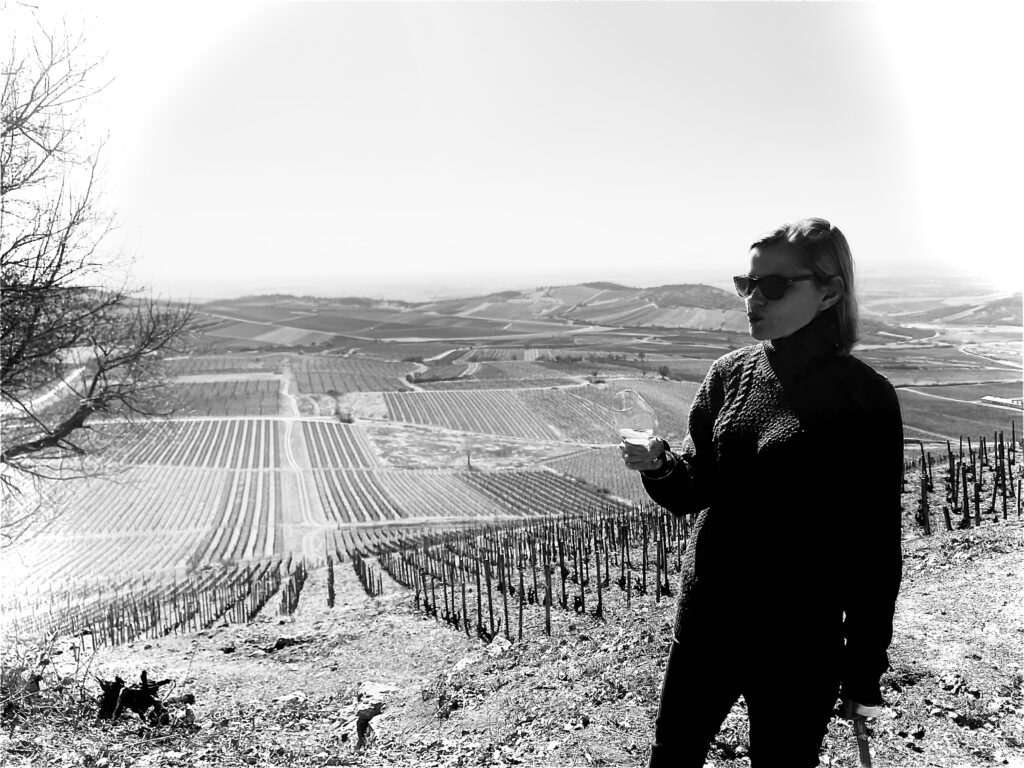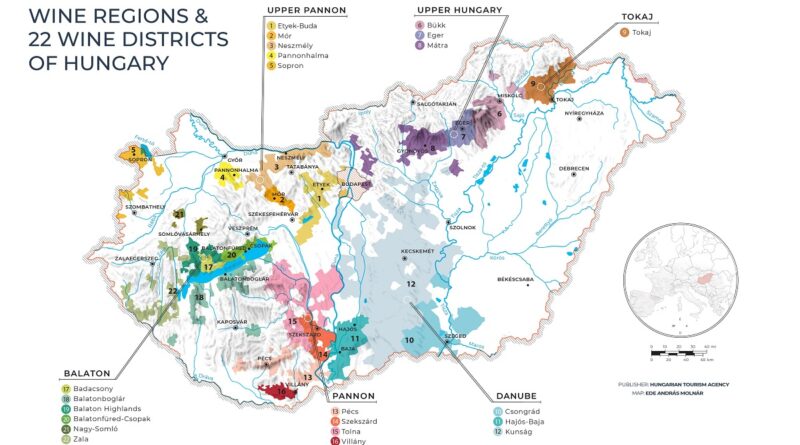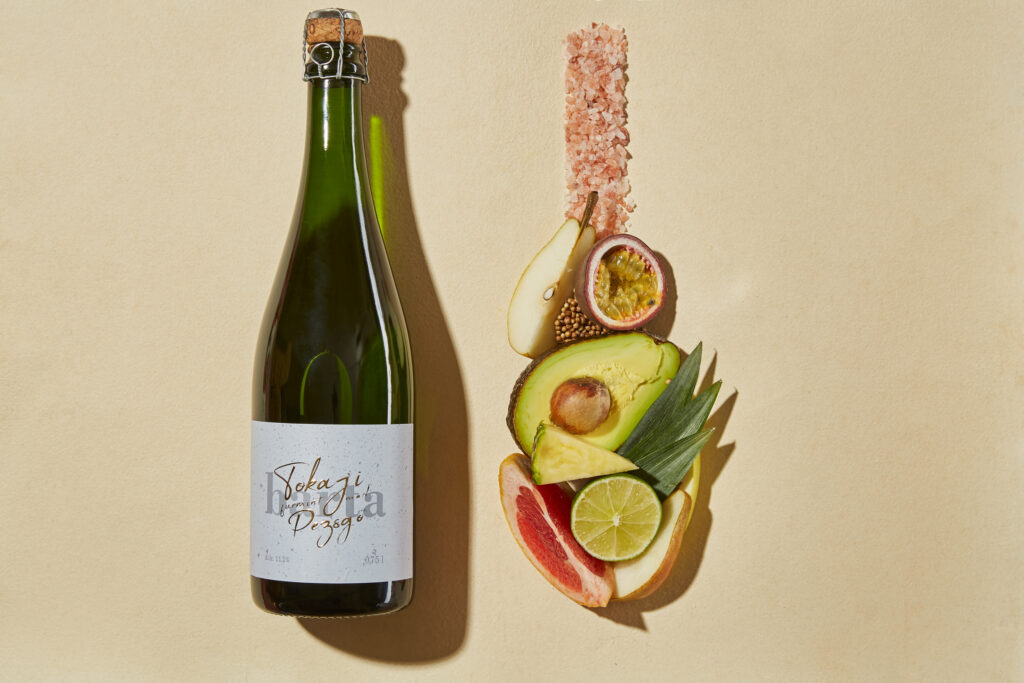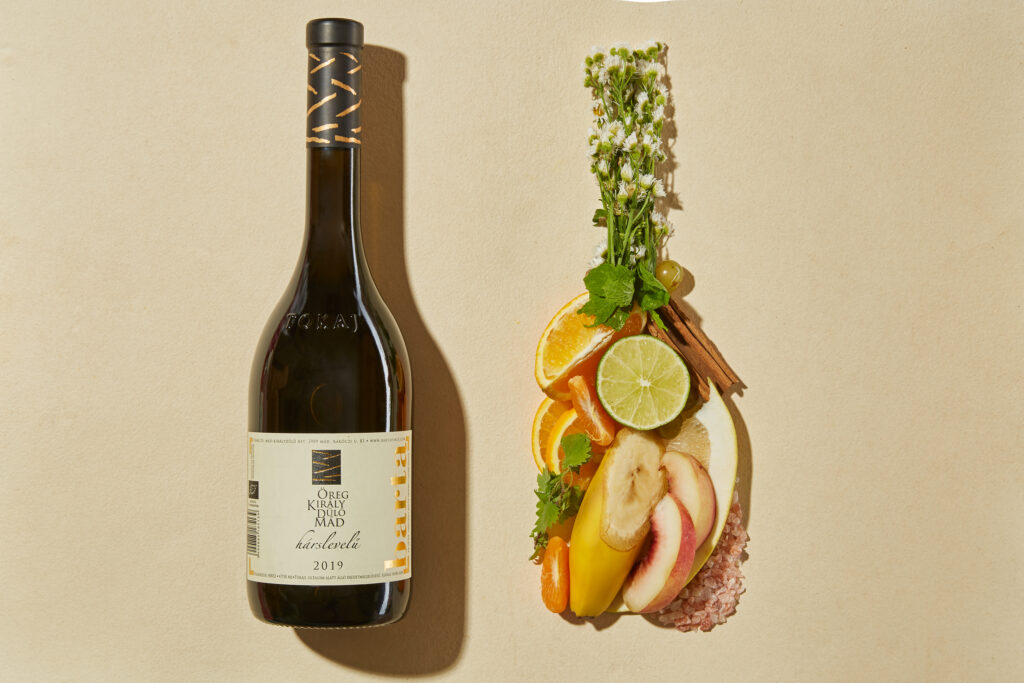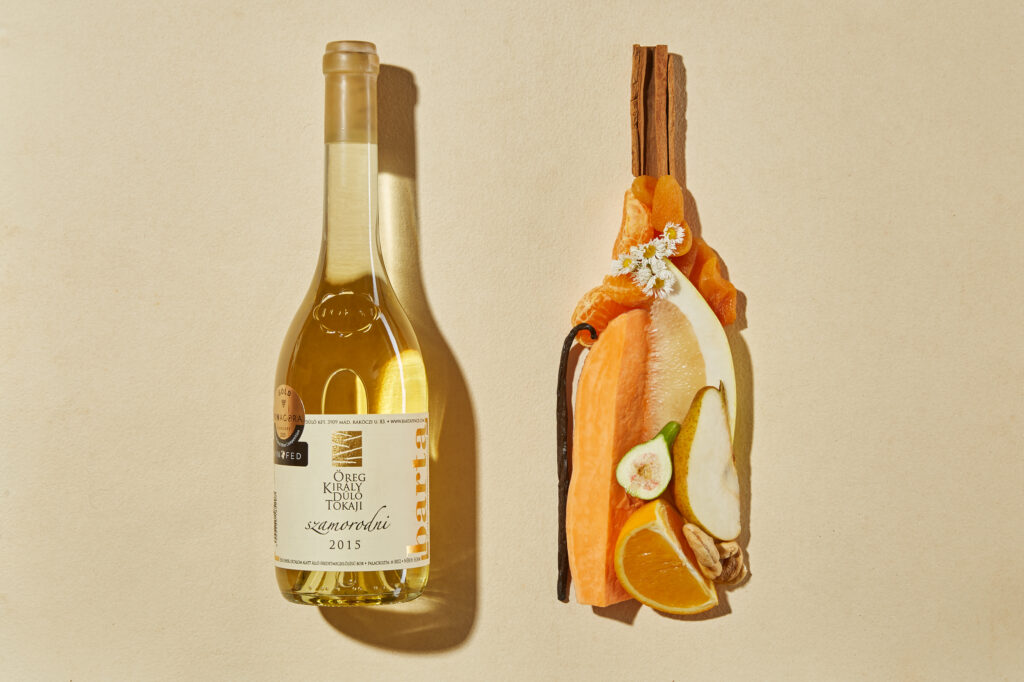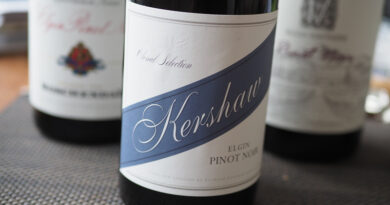Exploring Hungarian wine: the Hungarian Wine Summit 2022
Eger’s winemakers have rebranded Bulls Blood as Bikavér and are also making salty mineral volcanic whites of distinction. In Tokaj distinguished ancient wineries and young upstarts are at last gaining recognition for their crisp dry whites made from Furmint and Hárslevelü. Màtra offers insane value as small producers emerge from this ancient region known for bulk production.
Lisse Garnett visited Tokaj, Eger and Màtra for Wine Anorak. Article written with the generous help of Elizabeth Gabay MW, Caroline Gilby MW, Balassa István, Csilla Sebestyén, Dr Peter Molnár and Timor Gàl whose fascinating Masterclasses on Bikavér and Furmint furnished my brain with the necessary facts and inspiration.
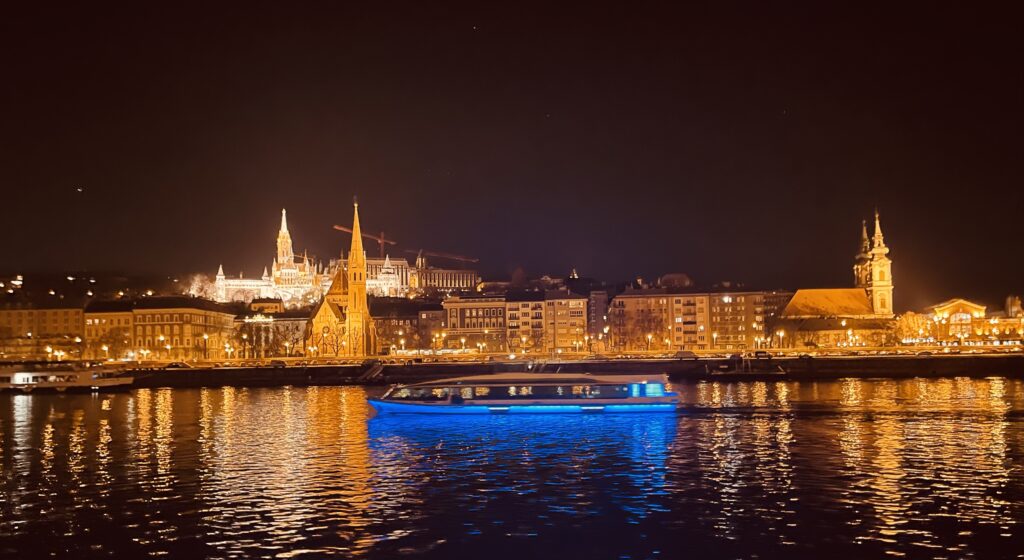
Once a huge shallow sea, Hungary sits in what is called The Pannonian (aka Carpathian) Basin, a plain that remained after its namesake sea dried up, surrounded by extinct volcanoes. Hungary is one of the world’s oldest wine making regions and yet I knew little about it before my trip (when I took my WSET Diploma it was hardly mentioned). Communism demolished many of the ancient wine making traditions, championing collective farming and volume over quality, thus rendering ancient precipitous low yielding vines obsolete. Many, such as the world famous Royal Vineyards of Tokaji, were overrun with vegetation and forgotten until investment came in the form of Hugh Johnson and wine-making impresario Peter Vingding-Diers, whose golden touch and impressive winemaking had a hand in Pingus, Rustenberg, Landiras and Montecarrubo.
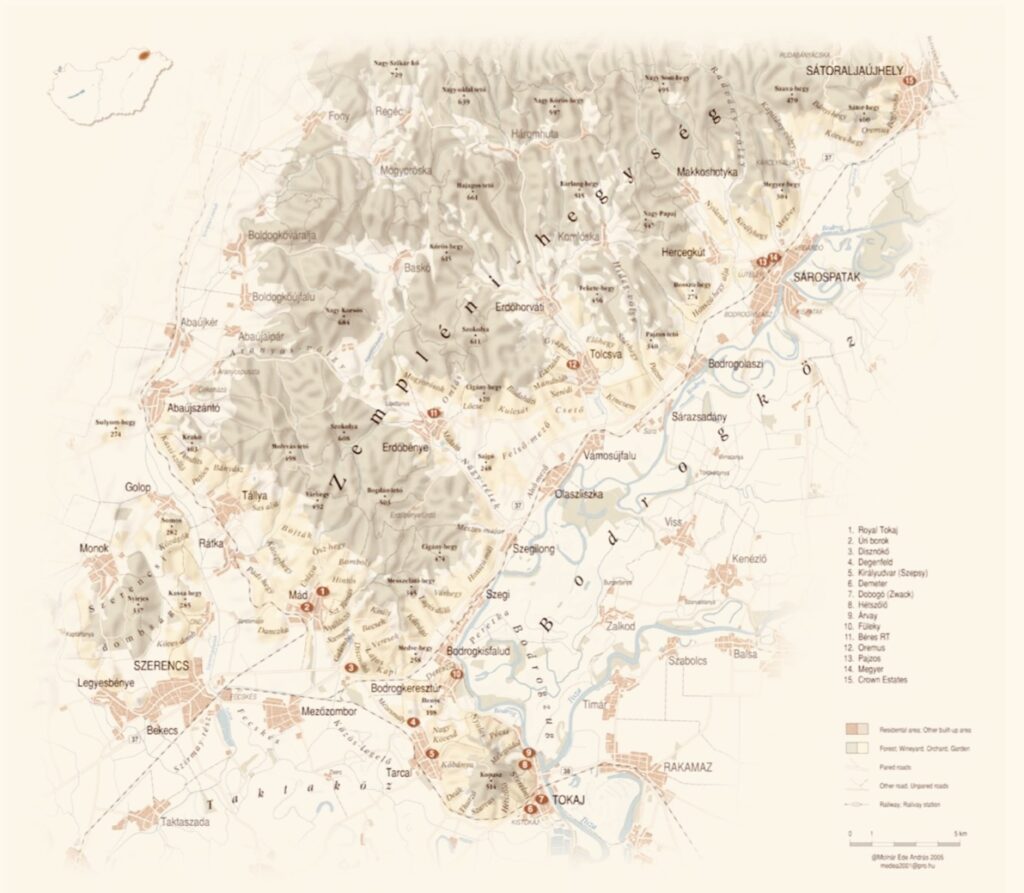
Old map of Hungarian wine regions 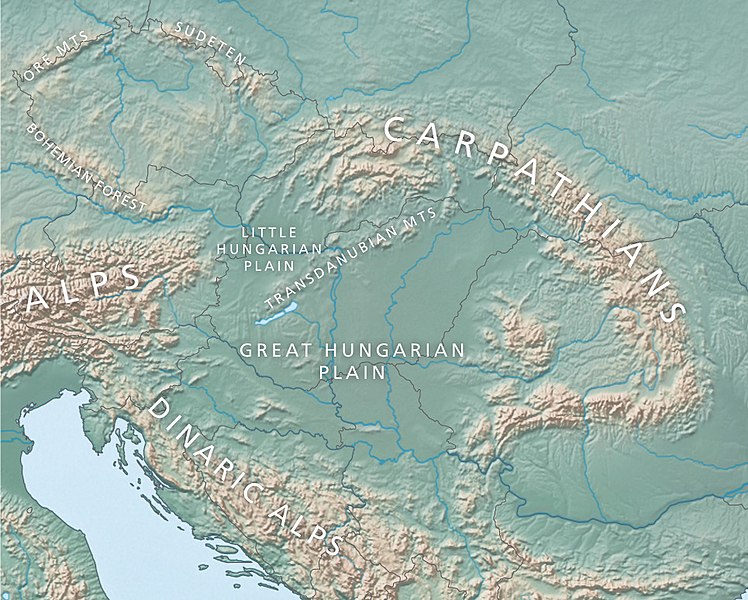
The Carpathian Basin
Today, some thirty years after the fall of Communism, ancient Tokaj crus have been resurrected, Bulls Blood has become Bikavér, and bulk-buy Màtra is carving a cost conscious niche for terroir driven youthful offerings.
Hungary can lay genuine claim to having the earliest demarcated wine region – Tokaj – by Royal Charter, in 1737. Vine Law was drawn up in 1641 for Tokaj-Hegyalia which outlined rules for site selection and even irrigation illustrating a deep-seated winemaking culture dating back to Roman times. Written evidence of vineyard councils reaches back to the 13th century.
Eger was the location of a legendary siege by the Ottomans who are said to have fled when faced with local warriors supping bull’s blood (leading to the name of the wine, which has now been supplanted by Bikavér). Unlikely though this story is, evidence of Asian, Caucasian and Roman winemaking traditions exist thanks to a violent past. Benedictine monks played a part in shaping the local winemaking traditions too.
Bikavér, grown on sedimentary soils, often by young growers, is emerging as a fascinating if varied category offering less oak than was previously traditional, a zippy acidity, spice, red fruit and freshness. There is little consistency as the strict regulations also allow for a serious amount of independent expression – growers must use 45% Kékfrankos and 5% Kadarka but after that international varieties can feature so Cabernet Franc, Pinot Noir and Cabernet Sauvignon may play a part.
There are six main wine producing regions according to Wines of Hungary, and 22 wine districts (see map above).
A prodigious wealth of indigenous varieties exits. Furmint is the easiest to spell and the best known, but many more obscure varieties face extinction. The language is hard to master but these varieties are worth tasting and comprehending. For me the volcanic minerality and saline floral notes of the full and sometimes linear white blends struck a real chord. The reds are reminiscent of the Northern Rhone or Barolo – being, spicy, red fruited and sometimes quite high in alcohol. This article is intended to take you on the tour I took. You can meet the growers via the clips and read my thoughts and theirs on the wines. I have tried to include pricing where possible. The main indigenous grapes varieties are listed last with explanations as are the notes.
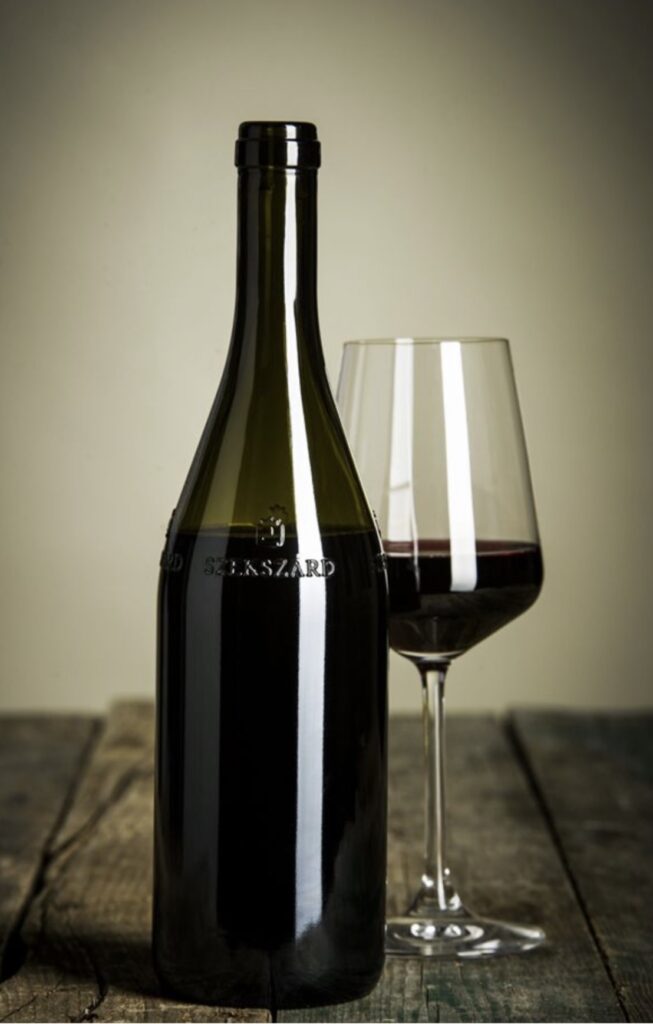
Red wines
There are three main regions that focus on red (but these also offer some exquisite mineral whites): Eger is the largest at 5500 hectares, Villàny 2450 and Szekszàrd 2300. The terroir is extremely varied – often volcanic; sedimentary limestone is rare but sought after; and tuffa provides the perfect bedrock for carving deep consistently cool cellars into the hillsides.
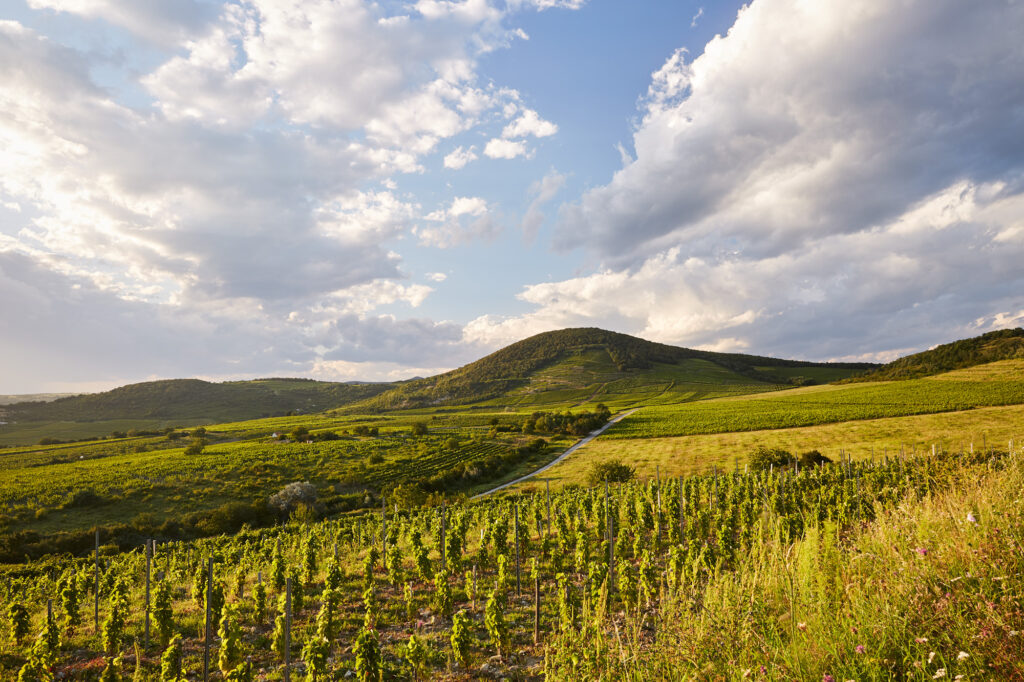
Old King Vineyard Tokaj 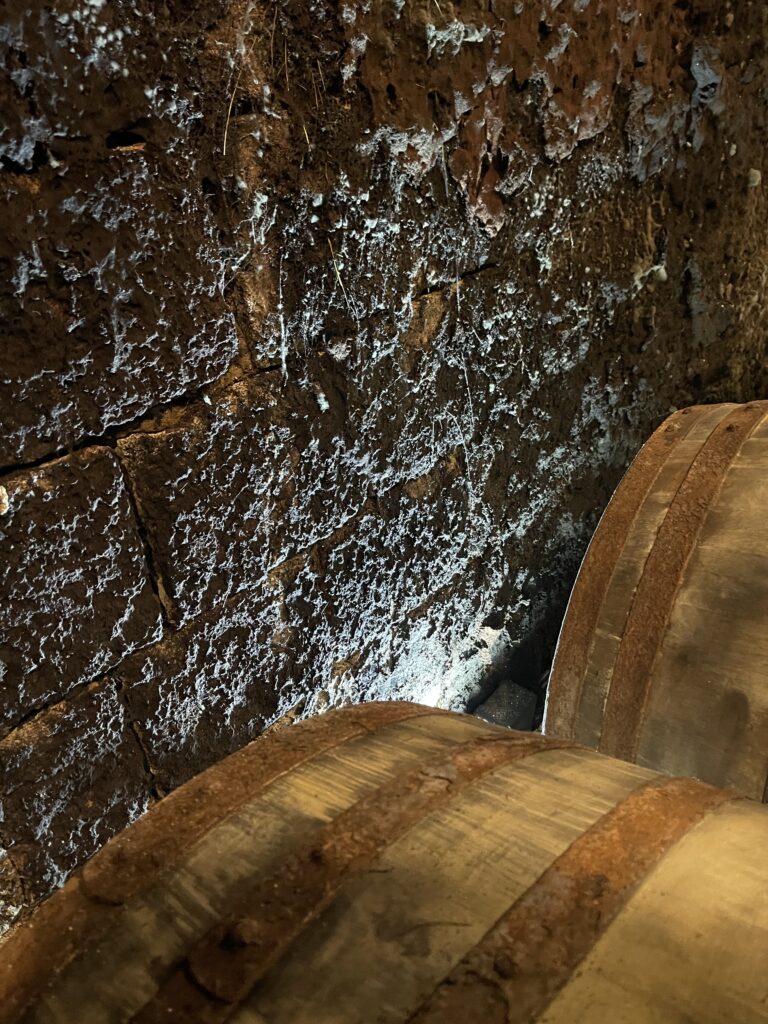
Cladosporium cellare 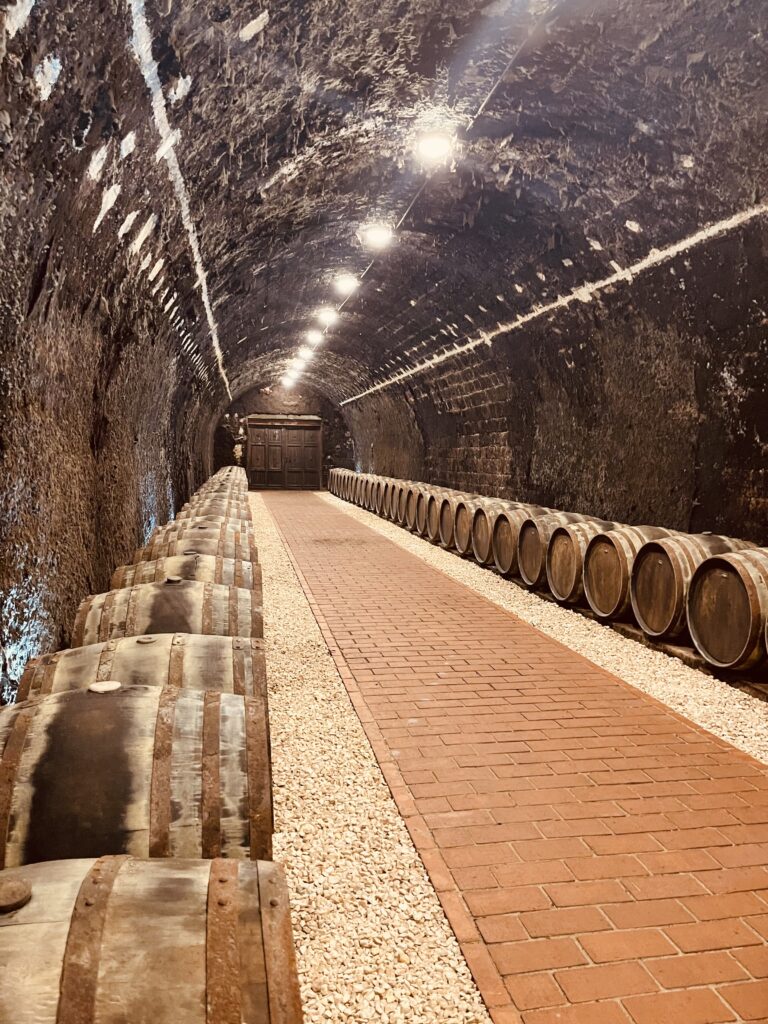
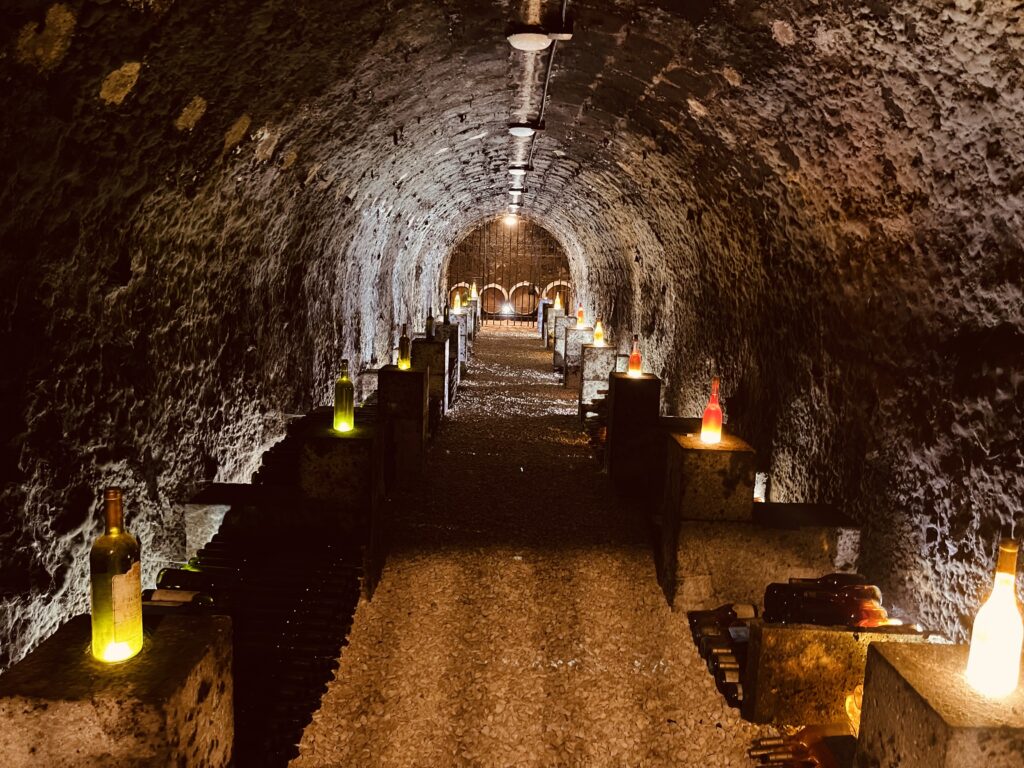
Cladosporium cellare covers the stone carved walls of the cellars
Aside from Botrytis cinerea, the mould that produces noble rot, the cool, hand carved rhyolitic tuffa cellars of Hungary feature a peculiarly comforting black mould that proliferates on every wall and is considered an important part of the region’s terroir. This mould is called Cladosporium cellare and its moisture retaining qualities are much lauded by the local wino cognoscenti…
As previously mentioned red wines from Hungary’s Eger drew parallels with the Northern Rhone and Barolo from my distinguished fellow wine travellers and a few growers dared mention Burgundy (Eger sits on the same northern latitude). The climate is cool.
Bikavér
AKA Bulls blood rebranded, a dark intense red blend and protected designation of origin in Eger and Szekszárd regions. There are more differences than similarities between the two types of Bikavér, Egri and Szekszàrdi, this stems from contrasting regulations and terroirs. Both must consist of at least four grape varieties, there is always a minimum oak ageing requirement and Kékfrankos must be the dominant grape (30-65% Eger, 45% + Szekszárd).
Egri Bikavér
Three categories: Classicus, Superior and Grand Superior
Oak ageing:
- Classicus – 6 months (13 varieties permitted, max yield 100hl/ha)
- Superior – 12 months (12 varieties permitted, 60hl/ha)
- Grand Superior – 12 months (12 varieties permitted, 35hl/ha)
Szekszàrdi Bikavér
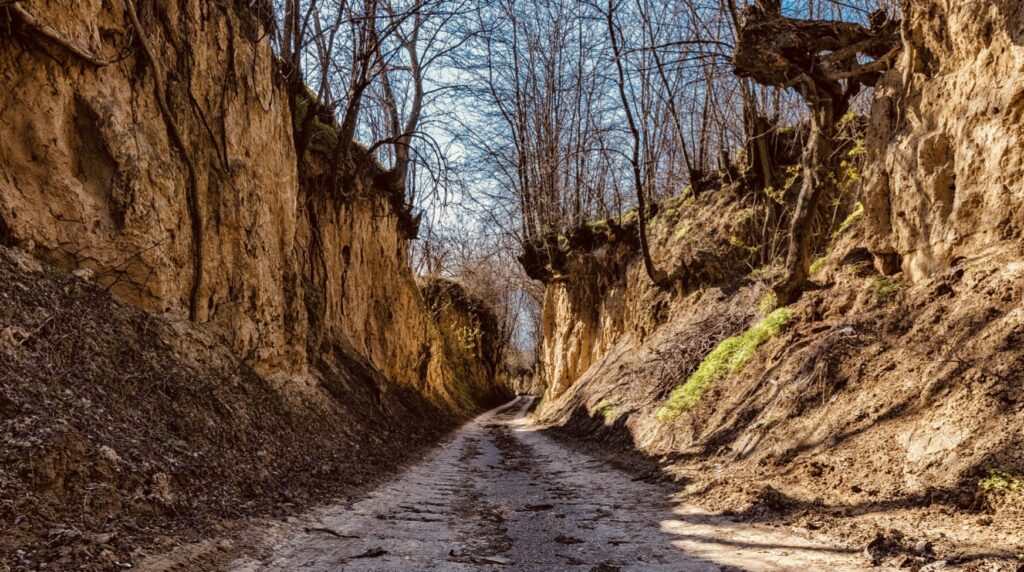
Two categories: Regular and Premium. Must be between 5 and 10% Kardarka
Oak ageing:
- Regular – 12 months (16 varieties permitted, 100hl/ha)
- Premium – 12 months (8 varieties permitted, 55hl/ha)
White Wines
Egri Csillag aka Star of Eger
This is a relatively new name (2010) for the counterpart white wines to Bikavér (aka Bullsblood) defined by Eger Vintners Association to mean a white blend that must include at least fifty percent of four indigenous white varieties such as Olaszrizling, Hárslevelü, Királyeánka, Leanyka, Zenit, Zengö, each of these must be no less than five percent of the blend. In addition up to thirty percent Muscat related varieties such as Ottonel, Tramini, Cserszegi Füszeres, and Zefir. Then international varieties such as Viognier, Pinot Gris, Chardonnay, Müller Thurgau, Sauvignon Blanc can make up the rest of the mix.
Interestingly this region – which is today known for its reds, used to be planted with predominantly white grapes until the 16th Century so Egri Csillag might be considered a return to form rather than a marketeer’s dream. Like Bikavér, differing levels of quality are offered:
- Classicus – tends to be fresher
- Superior – made from lower yielding vines and has seen oak
- Grand Superior – made from lower yielding vines and has seen oak
Tokaj Region (Tokaji wines)
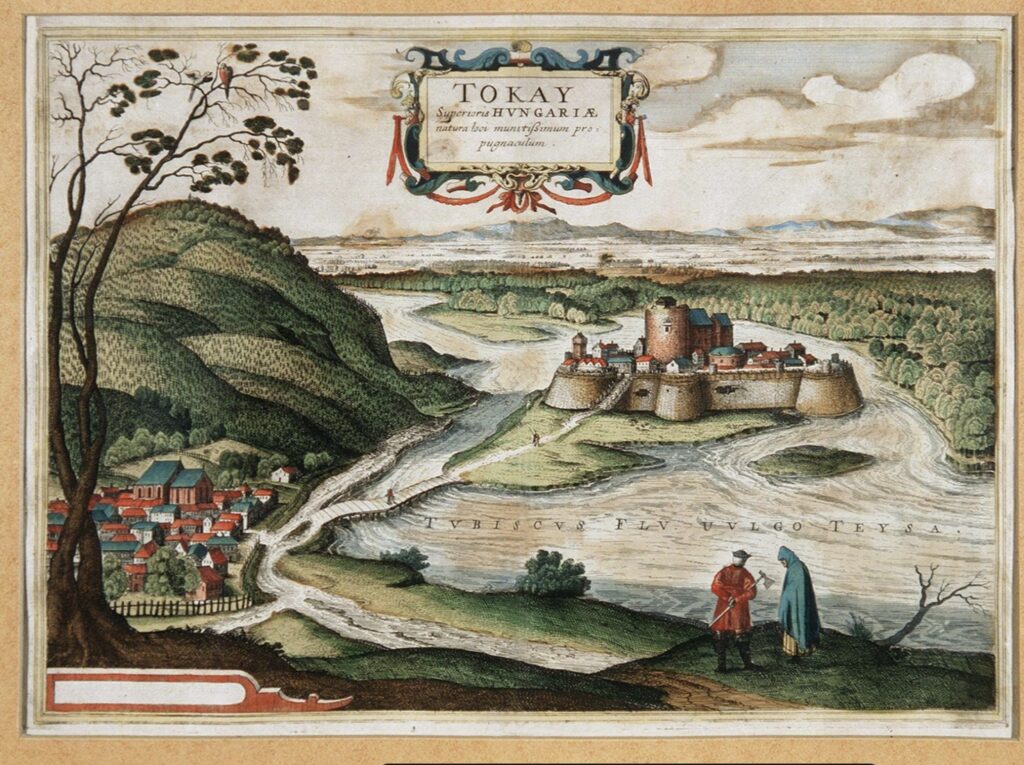
What many do not know is that 70% of Tokaj’s wine production is dry, and this is not a new phenomenon. Only white wine is produced. Located at the foot of the Zemplèn/Tatra mountains near the border with Slovakia, Tokaj sits atop of a multitude of 400 extinct volcanoes, soils are mineral rich and predominantly volcanic, therefore extremely varied. The climate is classically Continental with hot summers and long lengthy autumns. Noble-rot-inducing mists create the perfect conditions for botrytised grapes and Tokaji wines – ‘aszù’ every three years so dry wines have always been produced. Aszú berries must be macerated prior to being pressed in must or Tokaji dry base wine. Furmint and Hárslevelü account for 85% of the grapes grown over some 5800 hectares. Small amounts of Sàrgamuskotàly (Yellow Muscat) and Oremus and minute amounts of the indigenous Kövérszõlõ are also grown.
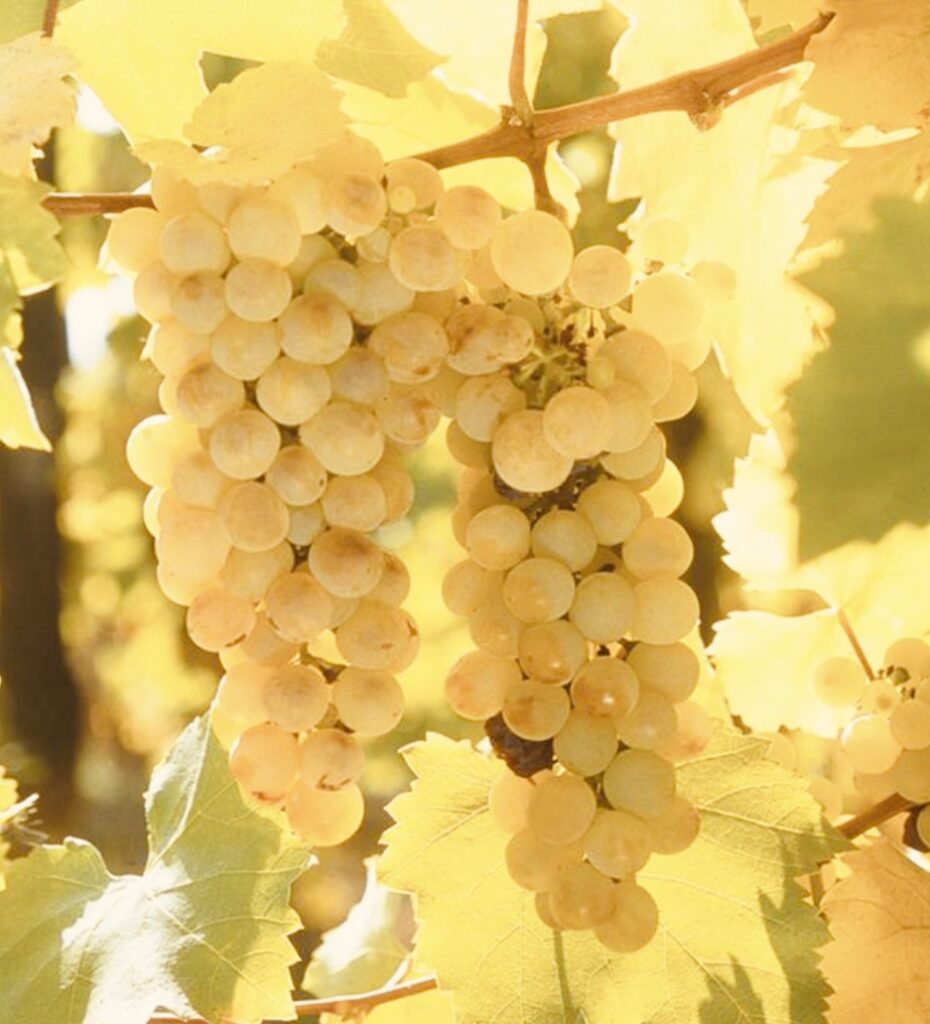
Furmint 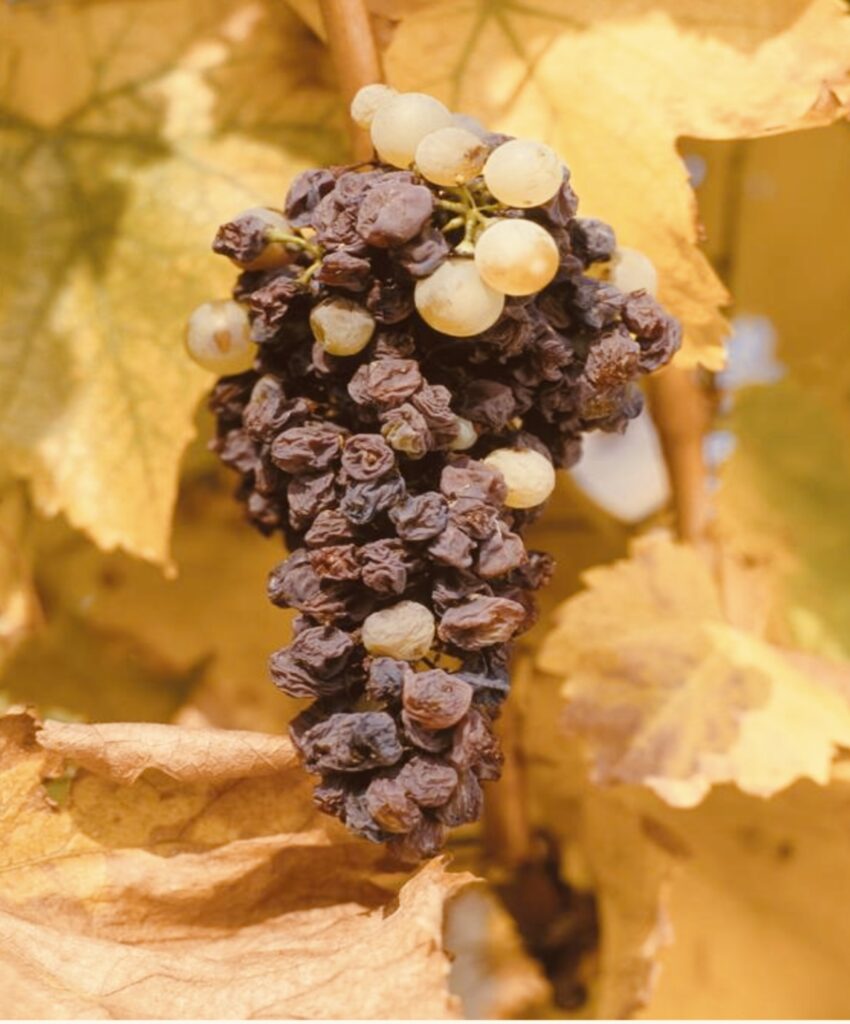
Nobly rotten furmint 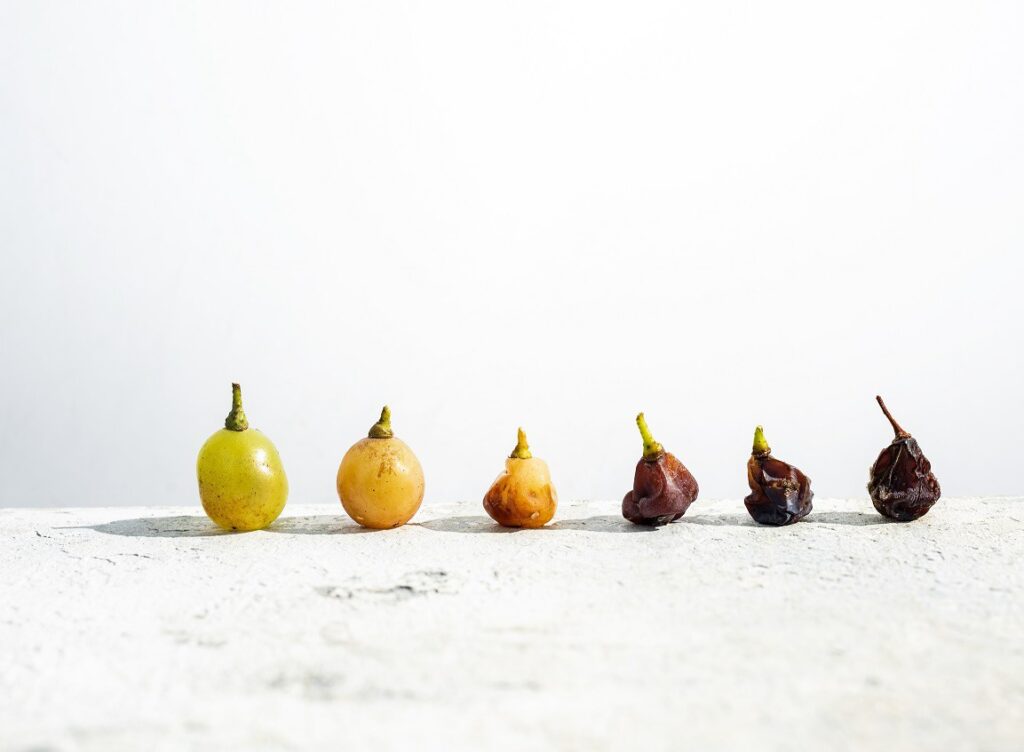
From Late Harvest to Eszencia
Tokaj lays claim to be the world’s first ever demarcated wine region delimited by royal decree in 1737 in which 27 villages were named suitable for making Tokaj and allowed to use the name Tokaji. This classification predates Portugal’s Douro by 20 years, Rhine’s Beerenauslese by 100 years and France’s Sauterne by more than 200. A recent move to distinguish Tokaji dry whites by offering them in a distinctive bottle has proved successful. Riedell have even designed a specific glass.
In the 18th century Tokaj was the wine of the moment and references to its wonders and royal patronage exist throughout Europe. Phylloxera then Communism struck fatal blows. Expropriated private vineyards were redistributed, the grapes collectively farmed regardless of quality and difficult-to-farm plots, often those of the highest quality, were in turn expropriated by nature.
1989 saw the fall of communism and, desperate for hard currency, the Mayor of Mad in Tokaj and the local co-op sought urgent outside investment. Eventually the The Royal Tokaji Wine Company was established thanks in part to the discovery of an ancient map detailing three levels of classification, First, Second and Third growth vineyards as identified by Prince Rakoczi in 1700.
Tokaj offers many varietal wines and Furmint based blends, Furmint is the most important though six varieties are permitted. Wines are usually aged in stainless steel or wood, today many producers use the special trademarked Tokaj bottle. Sparkling Tokaj PDO must be bottle fermented.
Tokaj Sweet Wine Styles
Late Harvest Wines – usually fermented and aged in tank.
Szamorondni (‘As it comes’) – whole bunch, partially botytised, no Aszú selection. Min 6 months oak ageing.
Aszú (5 or 6 Puttonyos) – selected hand harvested botrytis affected shrivelled berries soaked in must or young wine and aged in oak for a minimum of 18 months.
Eszencia – Trickle of thick syrup made from Aszú berries, min 450 g/l sugar. Barely ferments.
WINE MAKERS AND THEIR WINES
Barta (Tokaj)
Refounded in 2003 by the Barta family, the Barta Winery was once a royal estate belonging to the queen of Hungary. Many hectares of precipitous vines are grown on the Király Mountain where rocky soils of rhyolite, tuff, zeolite and clay lie. The majority of the vines are Furmint with a small amount of Hársevelü and Yellow Muscat.
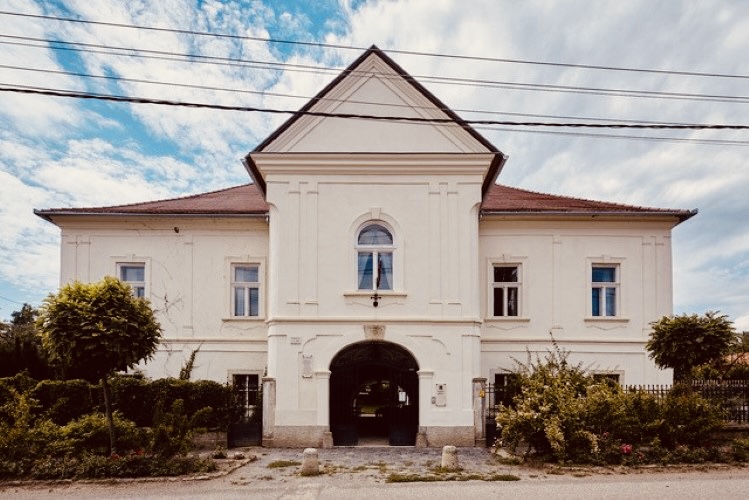
Barta Winery centres around the Rákóczi-Aspremont Château in Mad 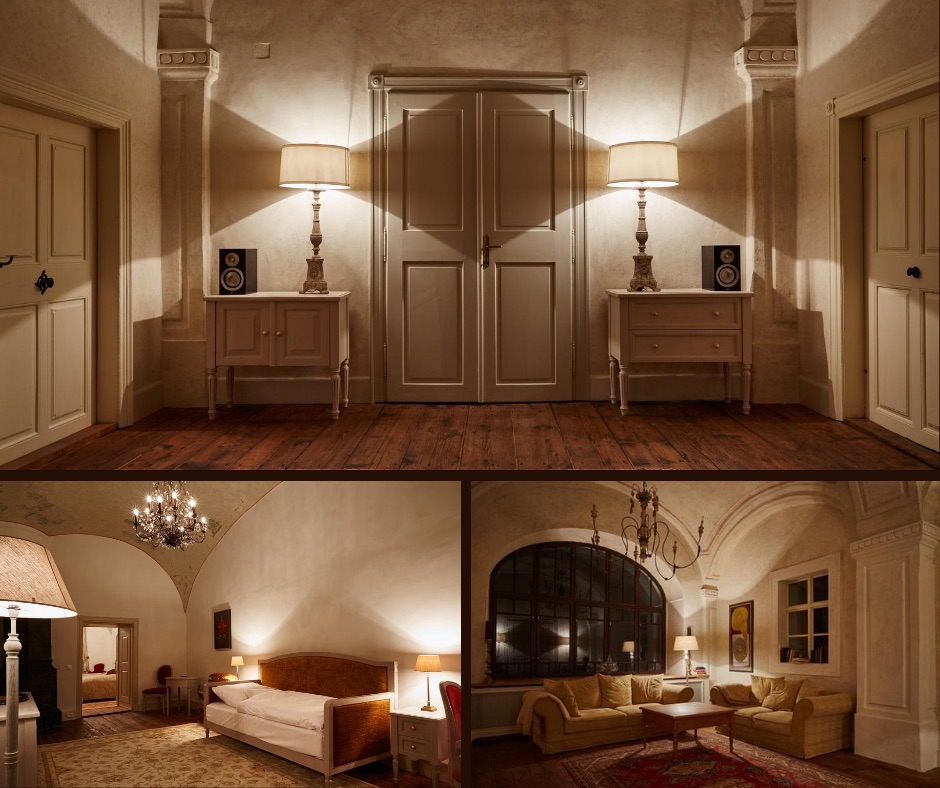
Accommodation at the villa is open to wine tourists 
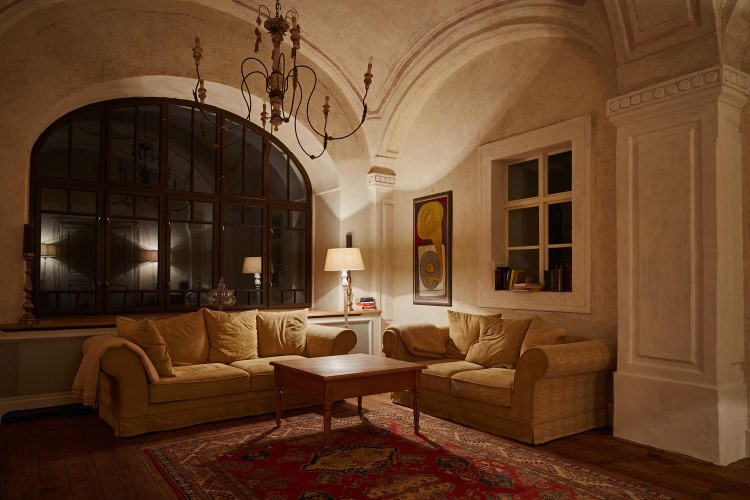
Communism championed bulk over all so many of the best, hard to farm terroirs were abandoned but these have now been replanted and are producing exquisite offerings such as;
Öreg Kiraly Dülo Mád Furmint made by talented young winemaker Vivien Ujvári the Head winemaker at Barta, a bright sapid crystalline mineral offering laced with ripe peach, yellow plum and spice. 97/100
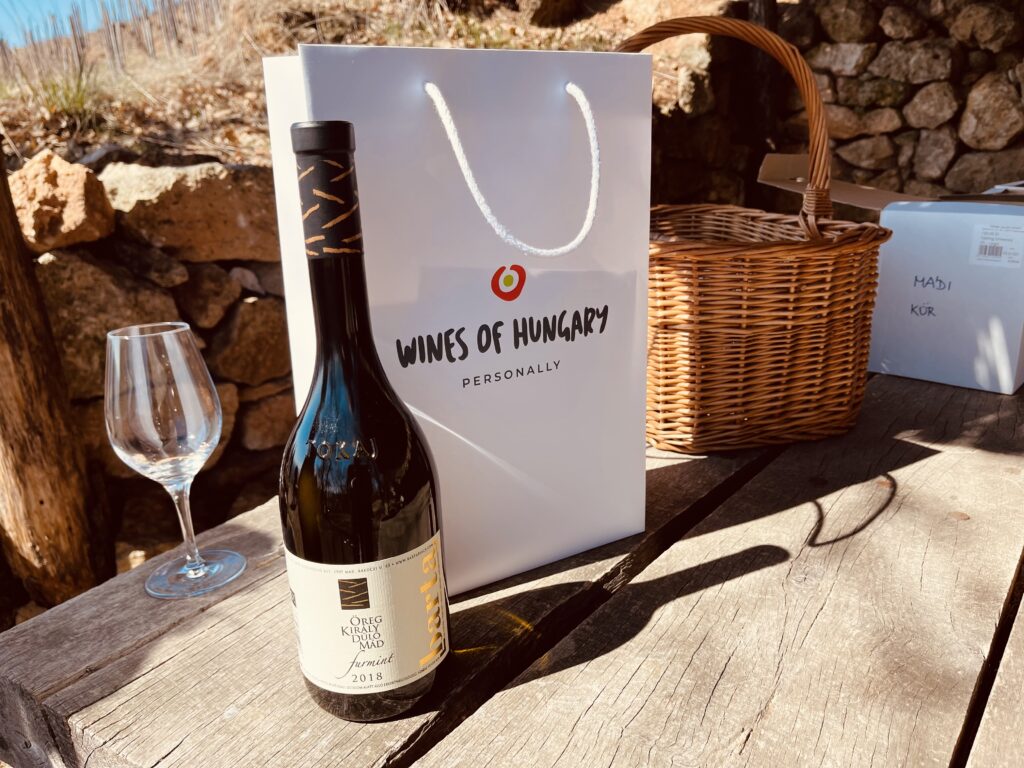
The grapes for this wine are grown in the Öreg Kiràly (Old King) vineyard, a precipitous terraced rocky slope on the Kiràly Mountains where once royal vineyards dating back to the 13th century lay. Aside from Furmint you can find Hàrslevelü, Yellow Muscat and Kövészölö.
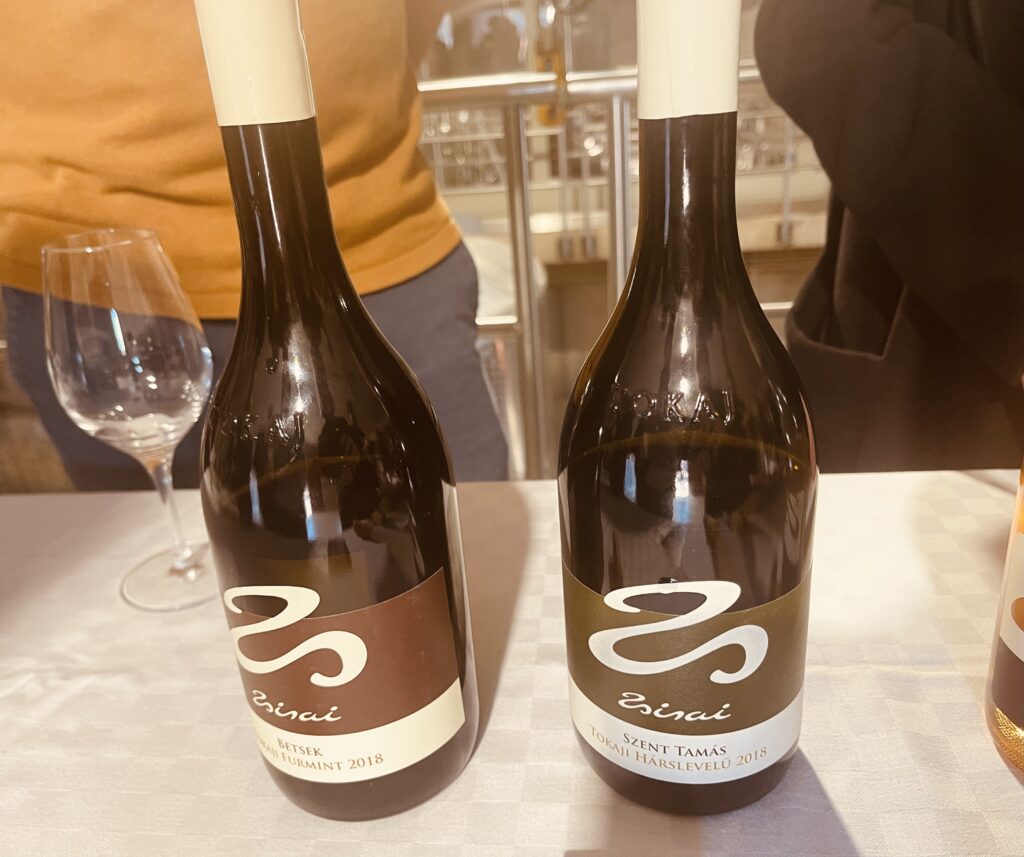
Zsirai (Tokaj)
Petra Zsirai, the winemaker from Zsirai (below) explains with beautiful clarity the characteristic attributes of Furmint and Hárslevelü in both dry and sweet winemaking and the history, the wine and the terroir in perfect English. Her modesty and sensitivity is admirable in the face of the exquisite wines she and her family produce. She and her young sister took over the winery aged only 24 and 21 respectively after their father died. They use natural ferment and all of their wines are made from estate grown grapes. We tried;
Betsek Furmint 2018 This wine is elegantly structured and yet replete with feline curves – concentrated and full yet mineral, zippy and round, full and fecund, lifted by citrus – mandarin and orange, dill, lemon too then rich toasted nuts, with a salty finish, delicious. 96/100
Szent Tamás Hárslevelú 2018 Gorgeous, elegant orange blossom honey-scented herbal nutty spiced sweet noted yet savoury wine – ripe pear and honeydew melon with a peppered finish. 96/100
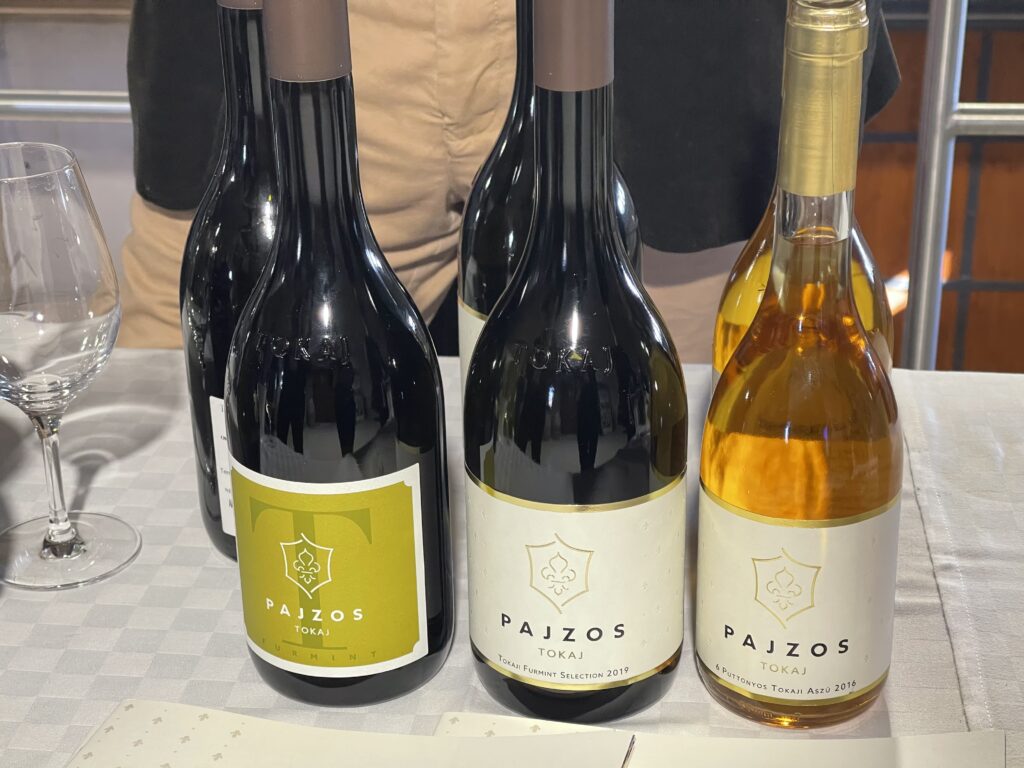
PAJZOS TOKAJ
Established in 1991, they produce a large range of dry, Late Harvest, Ice, Aszú and Aszú Essencia wines. Laurent Comer, Manager of Pajzos Tokaj gives a wonderful interview below with descriptions of the two dry Furmints.
Pajzos Tokaj 2016
Orange blossom, orange, apricot, manadrin and honey with a slight mineral note – a cool green limpid riverbed vibe. The wine is rich yet taut, dry yet silky across the tongue with a gorgeous salinity – weighty yet silky smooth, perfectly balanced – a touch of incense and Cointreau, perhaps ginger even a hint of spearmint on the long long lovely finish, 13% Alcohol. 96/100
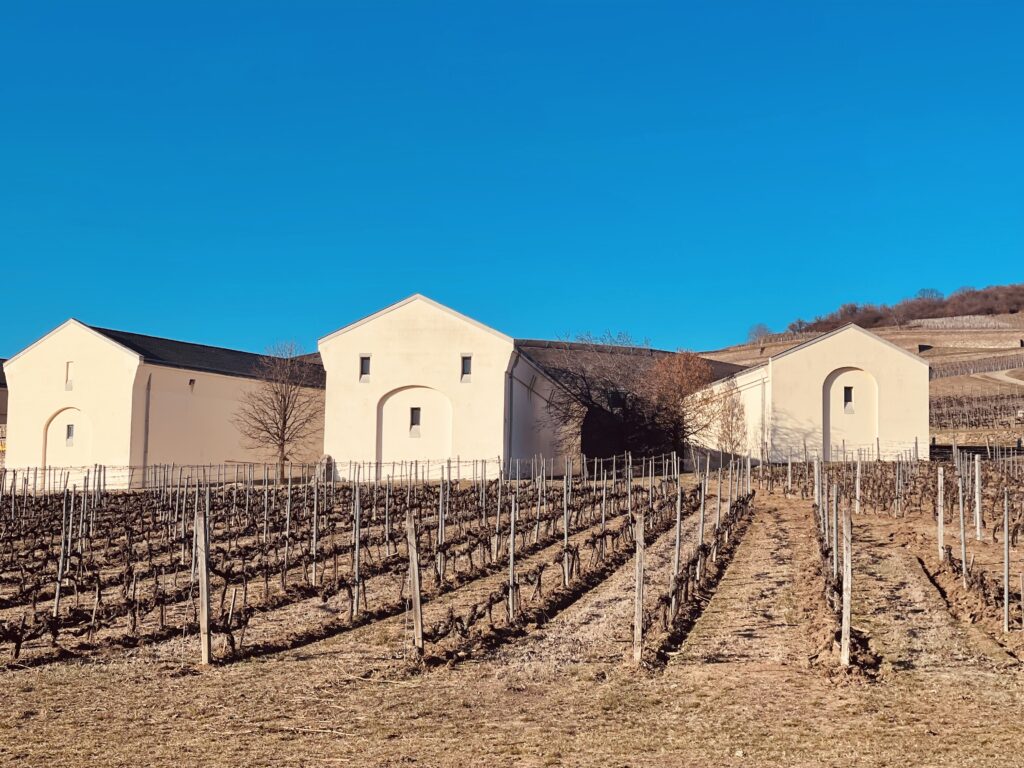
Disznókō Tokaji
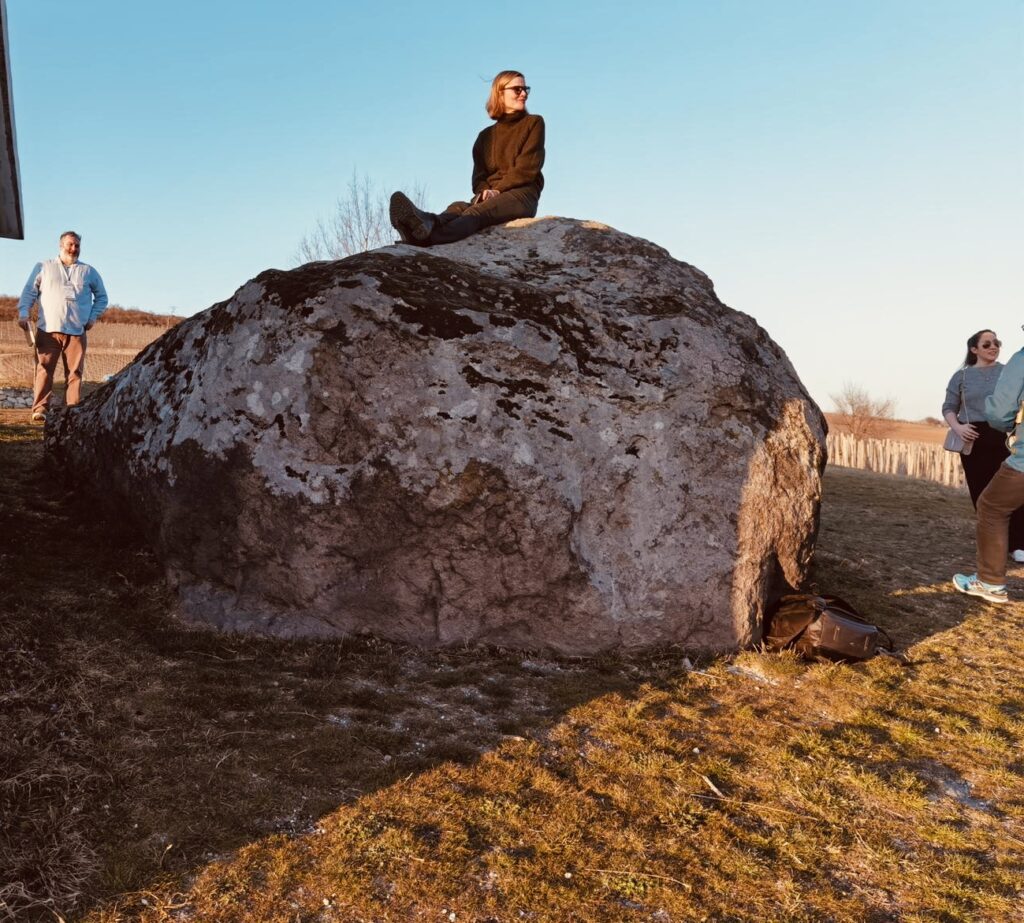
Boars rock 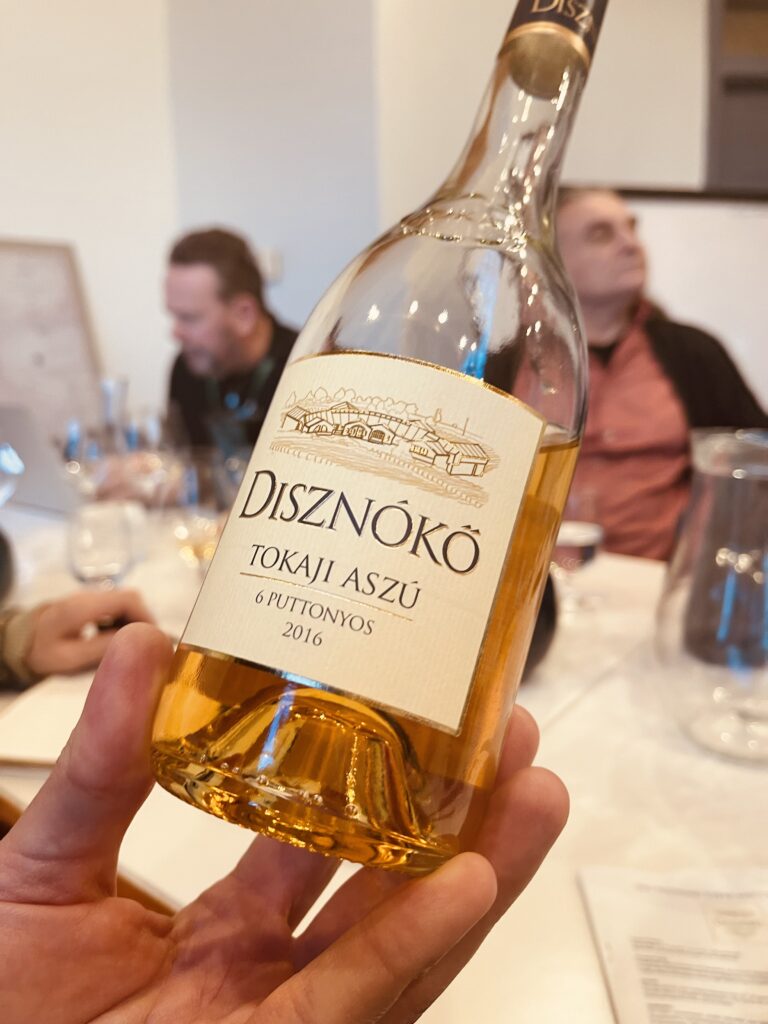
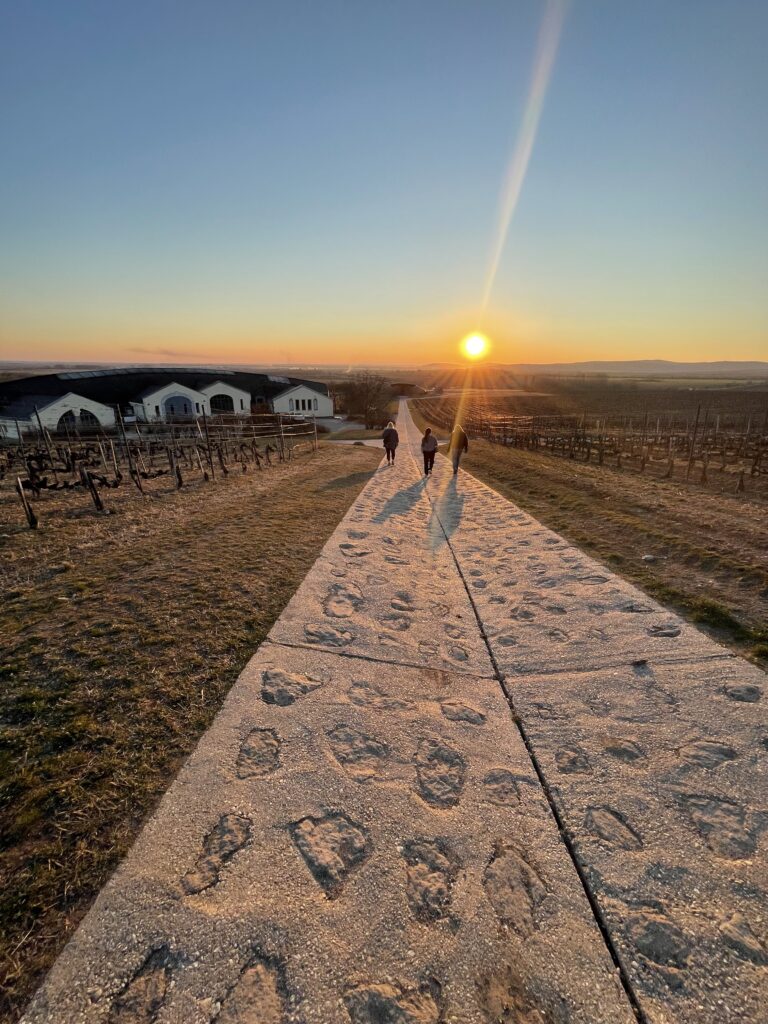
The vineyard opens onto the Hungarian Plain
This ancient winery has records dating back to 1413, the name means rock of the wild boar and there is indeed a huge rock overlooking the vineyards. This is considered a First Growth and post communism was bought by AXA Millésimes who also own Chateau Pichon Longueville and Quinta do Noval – the company have invested heavily as is clear both from the wines and the winery structures.
Disznókö 2016 Aszú 6 Puttonyos (Tokaji) Delectably sweet yet balanced by an intense sapid acidity, this fragrant nectar offers ripe apricot, passion fruit, vanilla, honey, tinned pears, apple pie and a fragrant layer of orange blossom and jasmine tempered by a hint of cool savoury mushroom skin. Slightly spicy – peppery (white) on the finish. 97/100
Láslo Mészáros, Director of Disznókö explains why he local terroir lends itself so perfectly to botrytised grapes.
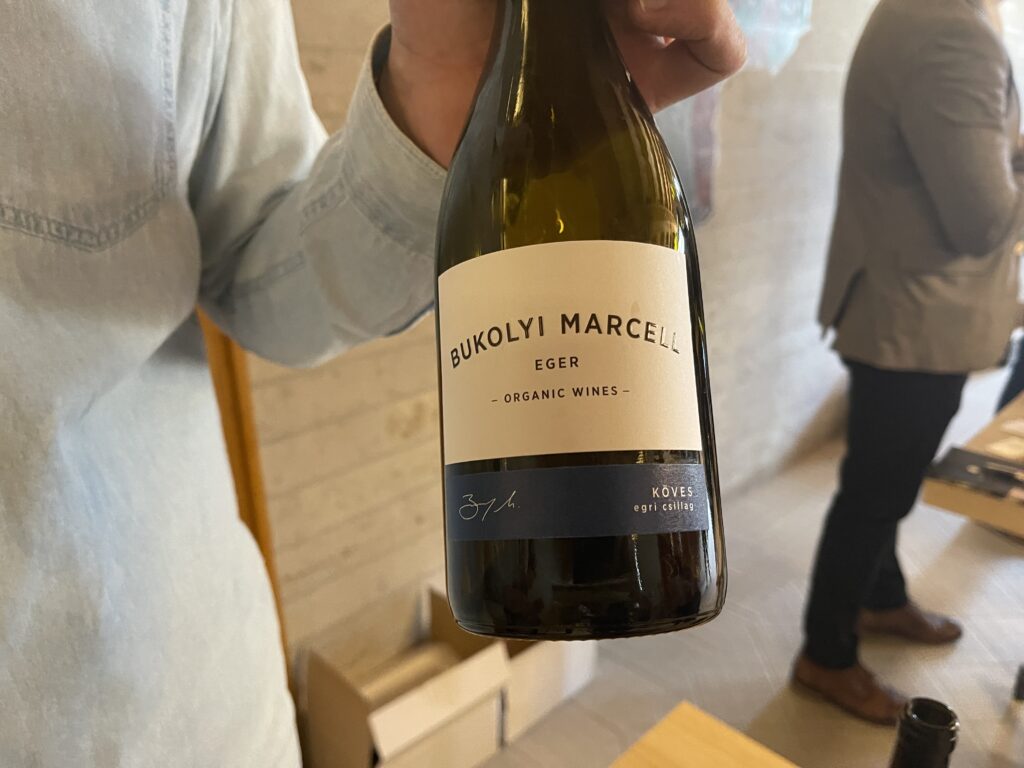
Bukolyi Marcell (Eger)
The only fully organic winery in Eger, Marcell Bukolyi farms 14 hectares of Kékfrankos, Furmint, Hárslevelü, Syrah, Cabernet Franc and Pinot Noir on limestone at the foot of the Nagy Eged Hill, Hungary’s highest altitude terroir (equivalent to Grand Crus).
Bukolyi Marcell Eger KÖVES EGRI CSILLAG This wine comes from the Köves, 6 hectares of limestone and chalk that sits at 330 meters. This is a blend of Furmint and Olaszrizling. It is the very first organic white Eger Star wine and so I felt compelled to write it up though Marcell is famed for his wonderful Rhone like Cabernet Franc laden reds. This white like many I tried, has the distinction of being both weighty and linear at the same time – a vibrant, mineral, lime laced dynamic wine with a touch of Hungarian oak. 93/100
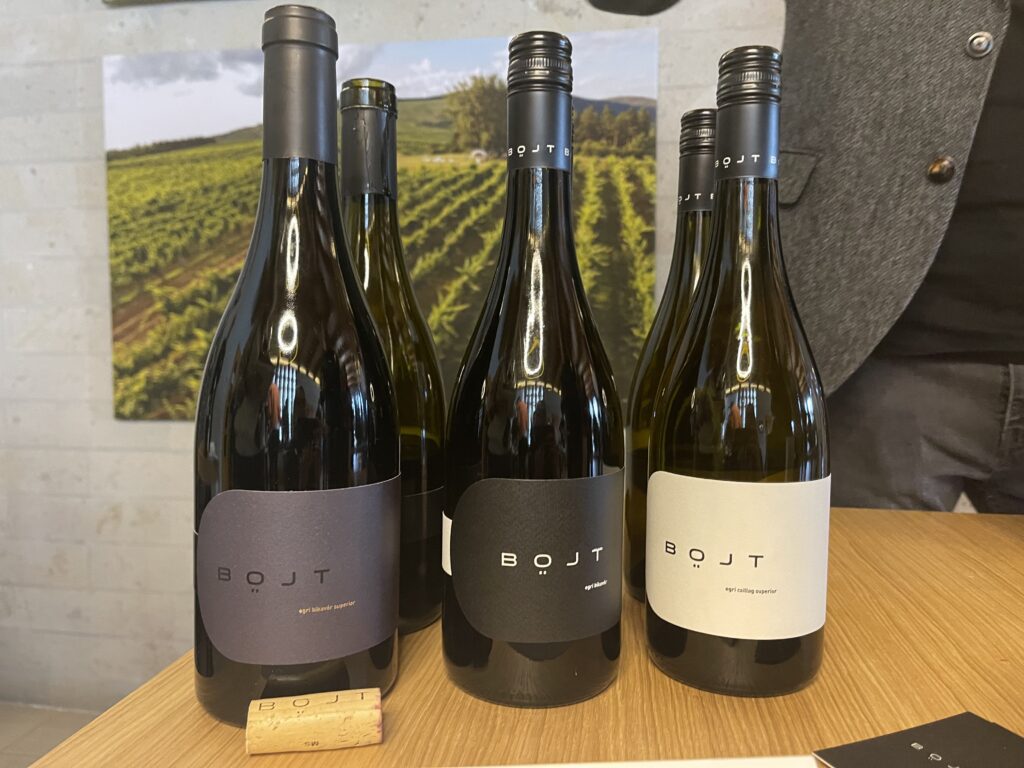
Böjt Winery
This small family farm was born when a 3 hectare plot of ‘compensation land’ was awarded to Böjt Lászlo in 1993 under a scheme offering reparation for the communist land confiscations that followed the 1956 Uprising against Stalinist Communist rule. Today this small plot has grown to 11 hectares on the slopes near Ostoros in Eger.
EGRI BIKAVÉR Superior 2018 50% Kekfrankos, 35% Pinot Noir, 10% Cabernet Sauvignon, 5% Zweigelt. 14 months in oak and 12 months bottle age prior to release, 13.5% Alcohol. Sour cherry, vanilla and sapid ripe red and black fruit, mouth waveringly delicious, crunchy, smoky, floral red. 94/100
EGRI CSILLAG SUPERIOR 2019 Blend of Olaszrizling, Sauvignon blanc, Leànyka and Muscat Ottonel (at least 50% must be Carpethian varieties to be Egri Csillag – the white equivalent of Bikavér). Fresh and zippy, yet viscous and floral with green apple, lemon, peach and pear, there is a light herbal note and a touch of green pepper, has seen oak. Glugably refreshing. 93/100
Màtra
The Màtra wine region is one of the oldest and sits in on the slopes of the North Hungarian Mountains. The region is known for aromatic whites and well structured reds but is little explored perhaps thanks to its role in producing mass market wines during Communism, today boutique wineries championing value exist. In the 1980s 40% of Hungarys wine originated here, today it’s about a third. The region had been known for its reds pre-phylloxera but now production is 70% white. Grape varieties here are Hàrslevelü, Olaszrisling, Chardonnay, Szükebarát, Orange Muscat. Kékfrankos is the dominant red grape with Cabernet Sauvignon, Pinot Noir and less so Kadarka. Situated close to the border with Slovakia, it is the westernmost viticultural district. This makes Mátra the second largest PDO wine region in Hungary. The geology of the Mátra foothills is mainly volcanic.
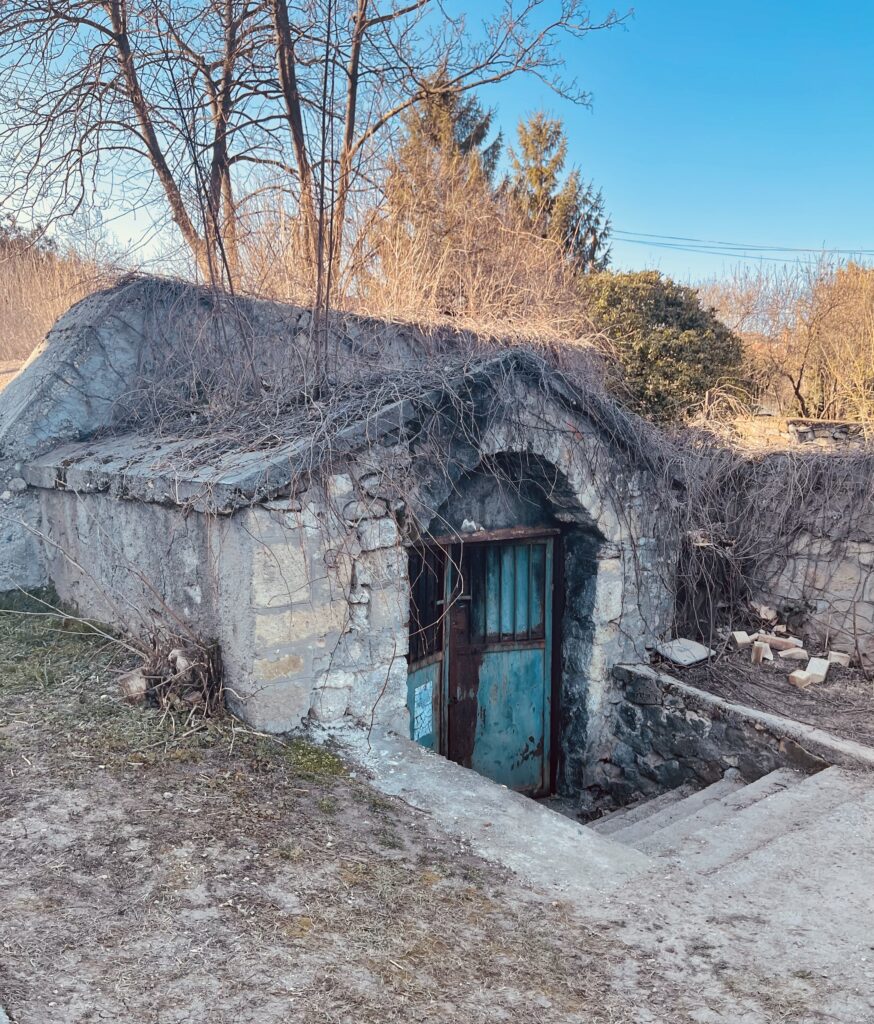
GRAPES
Furmint
High acid offers a steely backbone, high sugar, potentially boozy fine wine grape, susceptible to noble rot, with brilliant ageing potential and therefore the principle ingredient in the fine sweet wines of Tokaj. Parents are Gouais Blanc and Alba Imputotato. Buds early, ripens slowly. Makes incredible dry and sparkling wines too. The flavour profile offers apple, pear and quince but with botrytis dried apricot, peach and pear emerge. Reflects terroir and can offer mineral characteristics, specifically taste the wines of Somló, Badascony.
Olaszrizling
Most widely planted white variety which has absolutely no relation to Riesling. Known as Welschriesling in Austria, Graševina, Laški Rizling or Rizling Italyanski in Slovenia and Rizling Vlašsky in the Czech Republic. Often made into cheap white, its reputation is anything but refined and yet it can be wonderful in sweet botrytised white blends and is capable of beautiful dry, crisp yet rich, terroir reflective whites if yields are regulated. It buds and ripens late and retains acidity in low yields. Lake Balaton is a particular stronghold.
Hárslevelü
Perfumed, spicy and aromatic and according to Caroline Gilby MW added to Furmint to ‘build the mid-palate, making the wine longer and deeper’. The grape is Furmint crossed with Tzimlyansky Belyi. Vivien Ujvári of Barta is also a fan of its salty, floral spiced qualities and feels it should be a single vineyard wine.
Kékfrankos
Aka Blaufränkisch, Lemberger, Franconia. 8000 acres in Hungary found principally on the Great Plain in Eger and near the Austrian border in Sopron. High acid, deep colour and tannin, red fruit flavours, spice and weight make it extremely well thought of. It needs warmth to thrive as it buds early and ripens late.
Kadarka
Late ripening red grape which can produce quality wines if its natural tendency to over crop is curbed and its allowed to fully ripen.
Sárgamuskotály
AKA Yellow Muscat or Muscat Blanc a Petits Grains, Sarga Muskotaly. It is one of three varieties used to make Tokaji wines. Usually offers gorgeous orange blossom aromas and fragrant spice.
